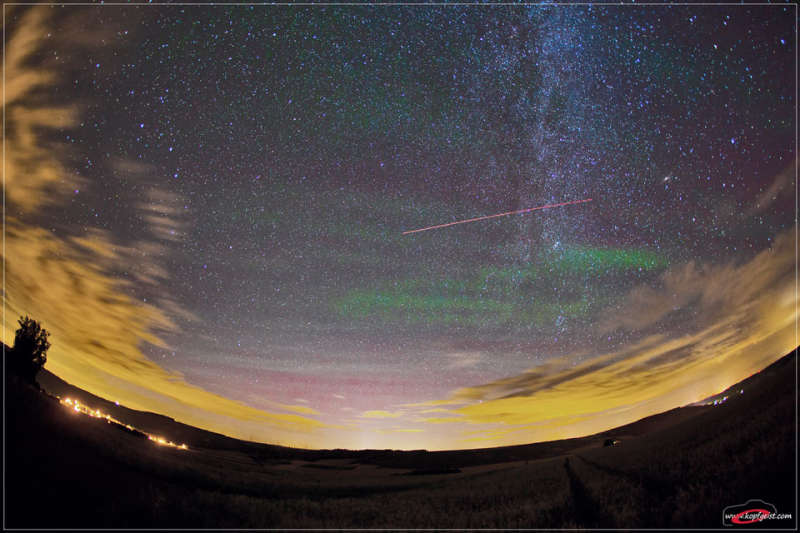
|
Credit & Copyright: Jens Hackmann
Explanation:
Does air glow?
It does, but it is usually hard to see.
When conditions are right, however, a faint glow about 90 kilometers up can be observed,
most easily with a wide-angle long-duration camera exposure.
The same
airglow can also frequently
be
seen looking down -- in pictures taken from Earth orbit
-- as a faint arc hovering
above the surface.
Pictured above between the
beige clouds, above the curving Earth, behind the streaking
airplane, and in front of the
sparkling stars are some
green
bands of
airglow.
The glow is predominantly created by the
excitation
of atoms by ultraviolet light from
the Sun, with the
bands resulting from density fluctuations caused by upward
moving atmospheric
gravity waves.
The above image was taken in mid-July above
Weikersheim,
Germany.
Lightning and
aurorae can also cause air to glow, but result from particle
collisions and are more fleeting.
Astrophysicists: Now
over 500 codes in the
Astrophysics Source Code Library
|
January February March April May June July August September October November December |
| ||||||||||||||||||||||||||||||||||||||||||||||||
NASA Web Site Statements, Warnings, and Disclaimers
NASA Official: Jay Norris. Specific rights apply.
A service of: LHEA at NASA / GSFC
& Michigan Tech. U.
Based on Astronomy Picture
Of the Day
Publications with keywords: atmosphere
Publications with words: atmosphere
See also:
